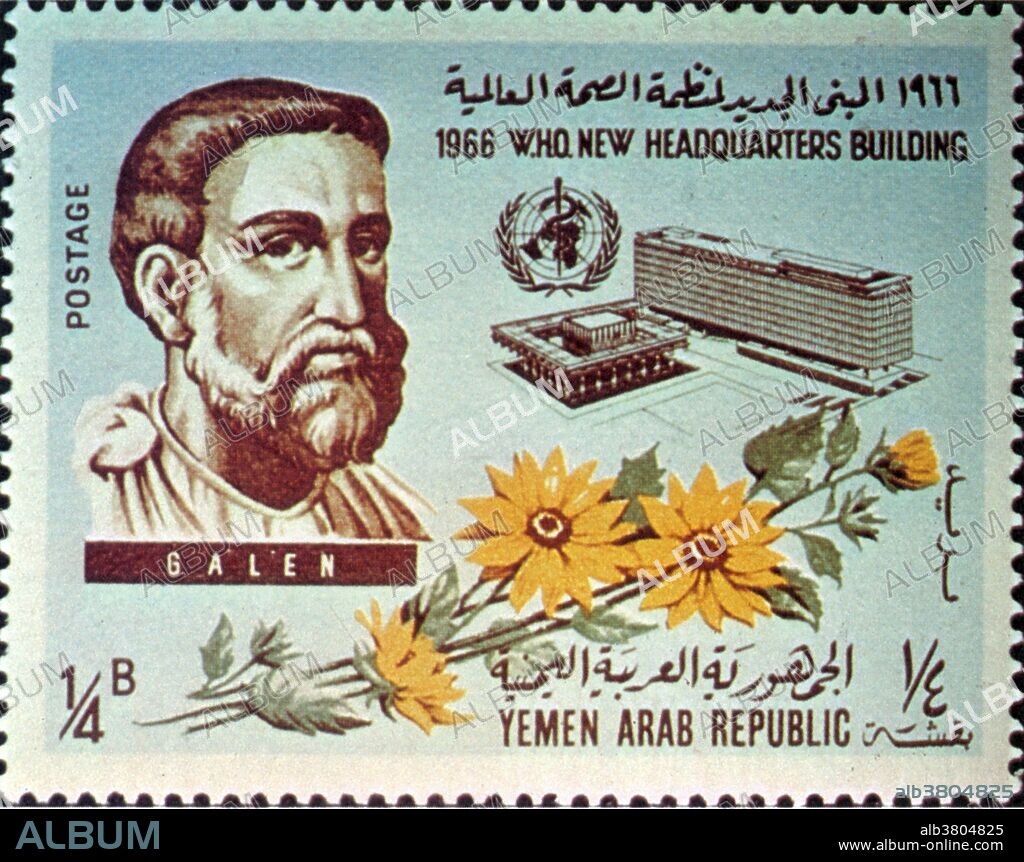alb3804825
Galen, Yemen Postage Stamp, 1966

|
Zu einem anderen Lightbox hinzufügen |
|
Zu einem anderen Lightbox hinzufügen |



Haben Sie bereits ein Konto? Anmelden
Sie haben kein Konto? Registrieren
Dieses Bild kaufen.
Nutzung auswählen:

Titel:
Galen, Yemen Postage Stamp, 1966
Untertitel:
Siehe automatische Übersetzung
Galen postage stamp from the Yemen Arab Republic, 1966. Galen (131-201) was born in Asia Minor. After receiving medical training in Smyrna and Alexandria, he gained fame as a surgeon to the gladiators of Pergamos. He was summoned to Rome to be the physician of the Emperor Marcus Aurelius and spent the rest of his life at the Court writing an enormous corpus of medical works. Taking Hippocrates' notions of the humors and pathology, he incorporated the anatomical knowledge of noted Alexandrians. A supporter of observation and reasoning, he was one of the first experimental physiologists, researching the function of the kidneys and the spinal cord in controlled experiments. His works came to symbolize Greek medicine to the medical scholars of Europe and the Middle East for the next 15 centuries. The most accomplished of all medical researchers of antiquity, he contributed greatly to the understanding of many scientific disciplines including anatomy, physiology, pathology, pharmacology, neurology, philosophy, and logic.
Bildnachweis:
Album / NYPL/Science Source
Freigaben (Releases):
Model: Nein - Eigentum: Nein
Rechtefragen?
Rechtefragen?
Bildgröße:
4200 x 3317 px | 39.9 MB
Druckgröße:
35.6 x 28.1 cm | 14.0 x 11.1 in (300 dpi)
Schlüsselwörter:
1960ER JAHRE • 60ER JAHRE • 60ER • BERÜHMT • BERÜHMTE PERSÖNLICHKEIT • BRIEFMARKENSAMMELN • ILLUSTRATION • ILLUSTRATIONS • MANN • NOTABEL • PERSON • PERSöNLICHKEITEN • PERSÖNLICHKEITEN • PHILATELIE • PROMINENZ • SECHZIGER JAHRE • YEMEN
 Pinterest
Pinterest Twitter
Twitter Facebook
Facebook Link kopieren
Link kopieren Email
Email
